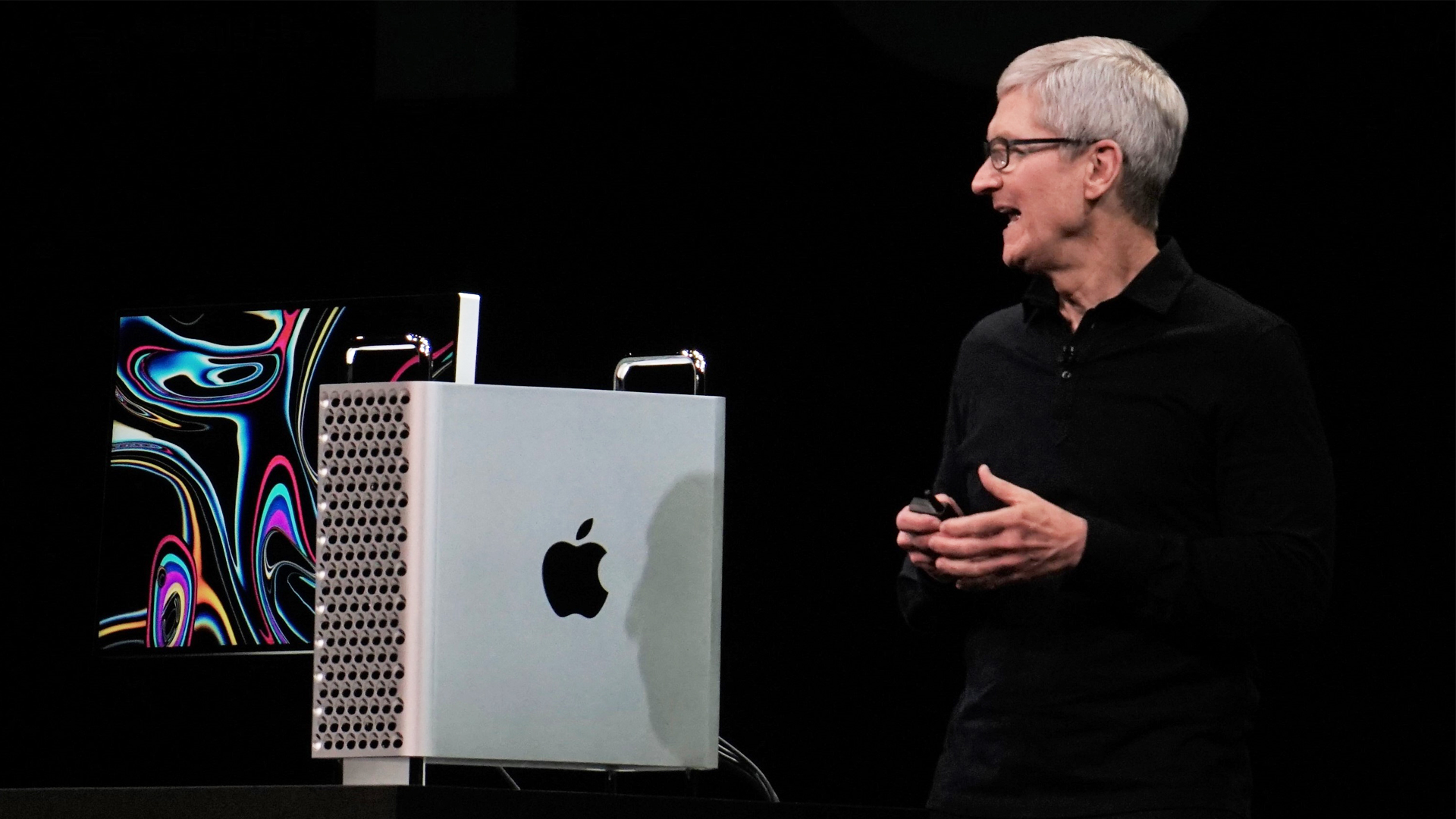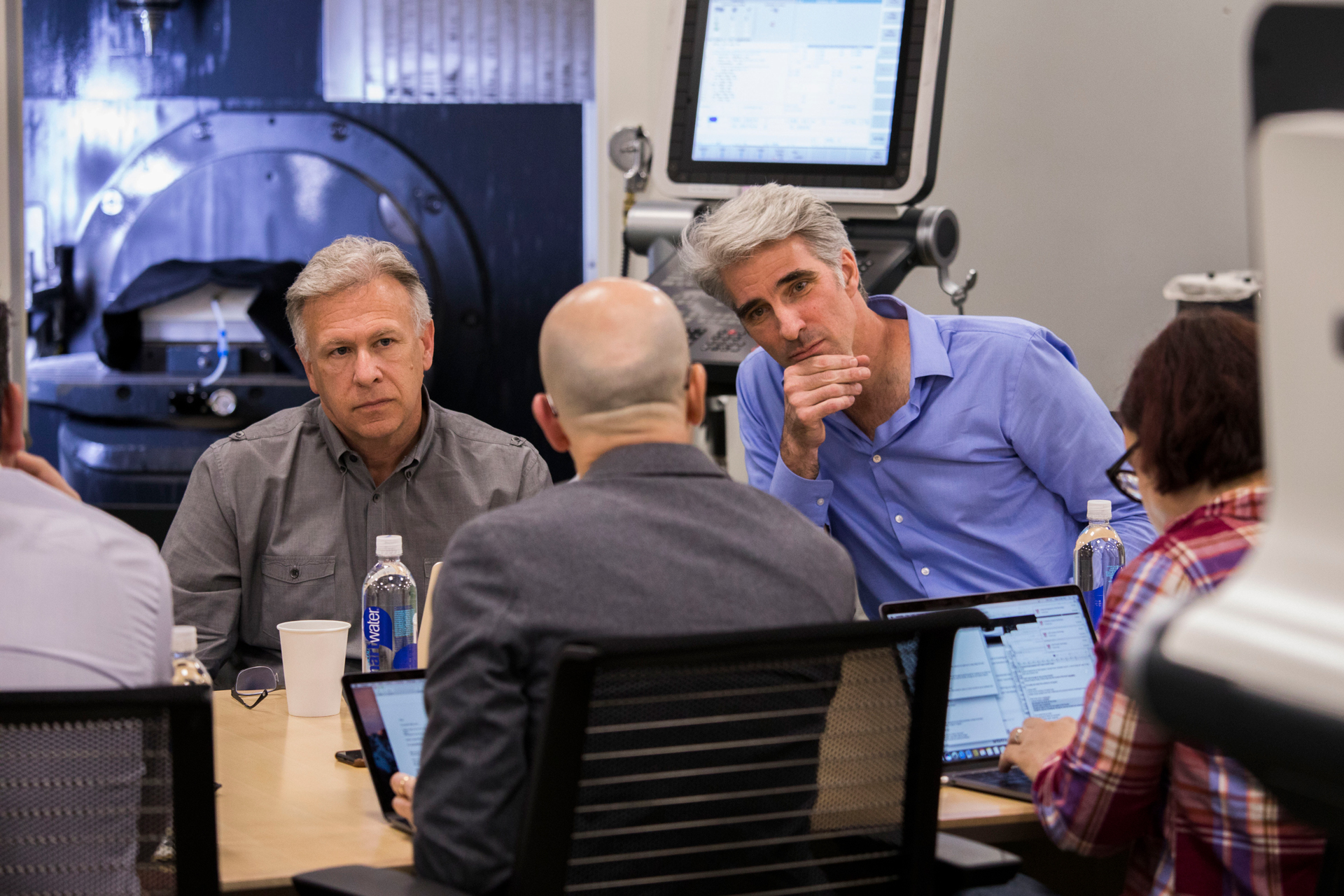Five years ago, Apple redefined 'Pro.' Is it time for them to do it again?
Opinion: Remembering a rare Apple 'apology'

Is it time, again for Apple to define "Professional"?
Five years ago, I sat in one of Apple's oldest buildings on the original Apple Campus, listening as three Apple executives did the unthinkable: apologized and shared future plans.
The apology was not to me, but to all the professionals who relied on the Mac Pro for business, production, and rendering tasks. An arguably small set of users with outsized influence on the perception of Apple in the broader marketplace. Basically, the circular (often derisively called "trashcan" design of the then-current Mac Pro) was too restrictive or, as Apple SVP of Software Engineering Craig Federighi told me and a small set of assembled tech journalists, "We’d found ourselves a bit boxed in by a circular shape.”
Apple listens to customer feedback, media reports, and online chatter about its products but usually never tells people like me anything about it. This time, though, Apple shared - a lot.
Is Apple Silicon the new divider?

The upshot of all this sharing was the uncharacteristic revelation of the next phase in the Mac Pro line. Essentially, Apple told us, they were starting from scratch. The "trash can" design would end up in, yes, the trash, and a completely new Mac Pro was on the way.
The rest is history. The redesigned Mac Pro, which Apple unveiled roughly a year behind schedule in 2019, is a blend of the traditional (removable box chassis and significant upgradeability), and the fantastic with a bold aluminum design featuring dozens of carved-out spheres.
I'm not sure everyone loved it, but it was not divisive like the last Mac Pro and quite effectively brought professional users back into the fold.
Are you a pro? Subscribe to our newsletter
Sign up to the TechRadar Pro newsletter to get all the top news, opinion, features and guidance your business needs to succeed!
Three years later, Apple is busy fracturing the Professional market with a divider it likes to call Apple Silicon.
Three years later, Apple is busy fracturing the Professional market with a divider it likes to call Apple Silicon.
Apple's custom SoC, which it introduced a year after the new Mac Pro, is quickly becoming the go-to processor for virtually every Apple product (even iPhones are being roped into the mix now that Apple insists on calling its A-series chips Apple silicon, as well).
With four distinct flavors - the M1, M1 Max, M1 Pro, and M1 Ultra - there's little these powerful chips can't do. They live in everything from the consumer-friendly iPad Air to the exciting, new Mac Studio.
For the moment the Mac Pro still runs Intel Xeon processors and powerful AMD Radeon GPUs. It is a monster performer and clearly for the "Pro-est" of the Pro.
But for how long?
Apple looks to define Pro... again
For professionals looking across a range of Apple gear - and Apple itself will tell you it sees products like the iPad Pro and Mac Pro as "complementary" - the picture is getting muddier, not clearer.
This isn't all bad. Who doesn't love choice? And the Apple of the last two decades is all about choice, as it slices every category into three or more options all designed for a different user or use case. Have small hands? The iPhone 13 mini or iPad mini is for you. On a budget? Look at the Macbook Air, iPad 9.7, and iPhone SE.
It's smart, but Pro users who perhaps understood their go-to products by measures of horsepower must be getting a little confused.
There are other clear differences in storage, ports, and screens that help define the MacBook Pro as a professional system over the Air, but the differences keep shrinking.
They were thinking of buying the iPad Pro 11-inch but then noticed that the 10.9 iPad Air is just as powerful. They were thinking about the Mac Pro but then noticed the Mac Studio with a pair of M1 Maxes slammed together to make an insanely powerful M1 Ultra.
MacBook Pros and MacBooks run the same M1 chips and its variants. There are other clear differences in storage, ports, and screens that help define the MacBook Pro as a professional system over the Air, but the differences keep shrinking.
A little clarity wouldn't hurt
This is not a misstep or an Apple mistake worth apologizing over, but I think we could use some clarity.
Where, Apple, does the Apple Professional look? Are you offering her incremental upgrades, tiny, creek-sized differences, like a bit more performance, upgradeability, maybe LiDAR, and a slightly better camera or can she still expect a river of change between consumer and pro-level hardware?
I have no illusions about Apple ever conducting another once-in-lifetime roundtable to discuss misgivings and product futures. Mainly because Apple didn't change on that day. It had something to say, needed to reassure a key market, and found the canniest way of doing so.
Apple's in no need of that level of reflection and sharing, anyway, but it should communicate that it still understands the needs of the professional, knows they are special, and will build for them in a way consumers can scarcely imagine or afford.

A 38-year industry veteran and award-winning journalist, Lance has covered technology since PCs were the size of suitcases and “on line” meant “waiting.” He’s a former Lifewire Editor-in-Chief, Mashable Editor-in-Chief, and, before that, Editor in Chief of PCMag.com and Senior Vice President of Content for Ziff Davis, Inc. He also wrote a popular, weekly tech column for Medium called The Upgrade.
Lance Ulanoff makes frequent appearances on national, international, and local news programs including Live with Kelly and Mark, the Today Show, Good Morning America, CNBC, CNN, and the BBC.